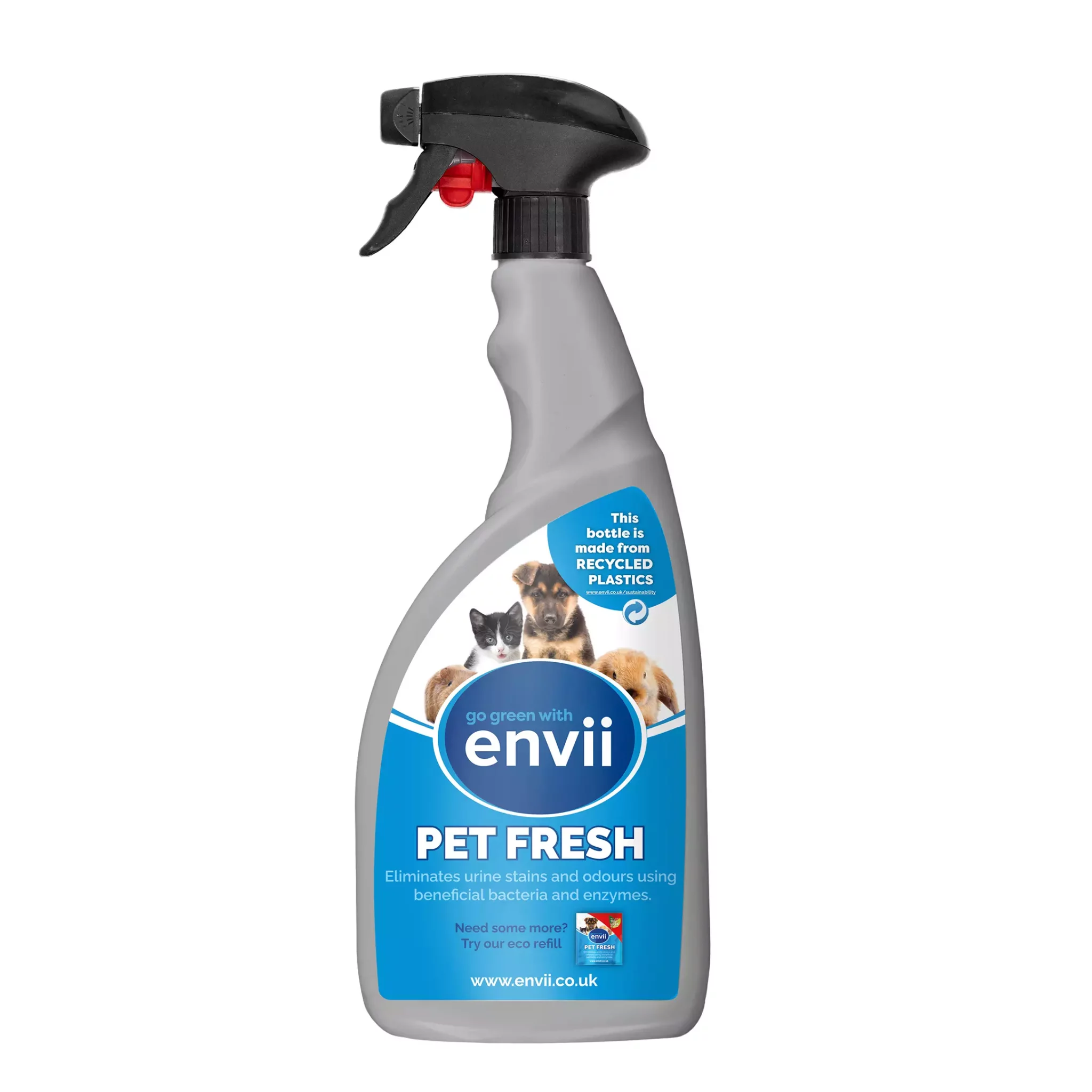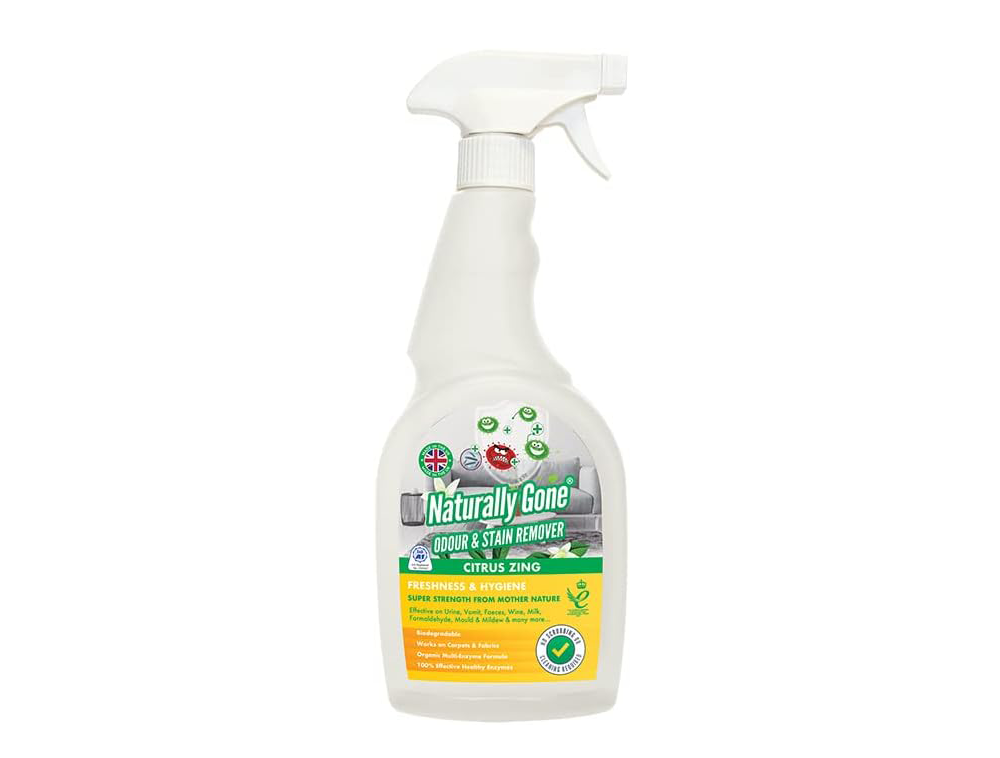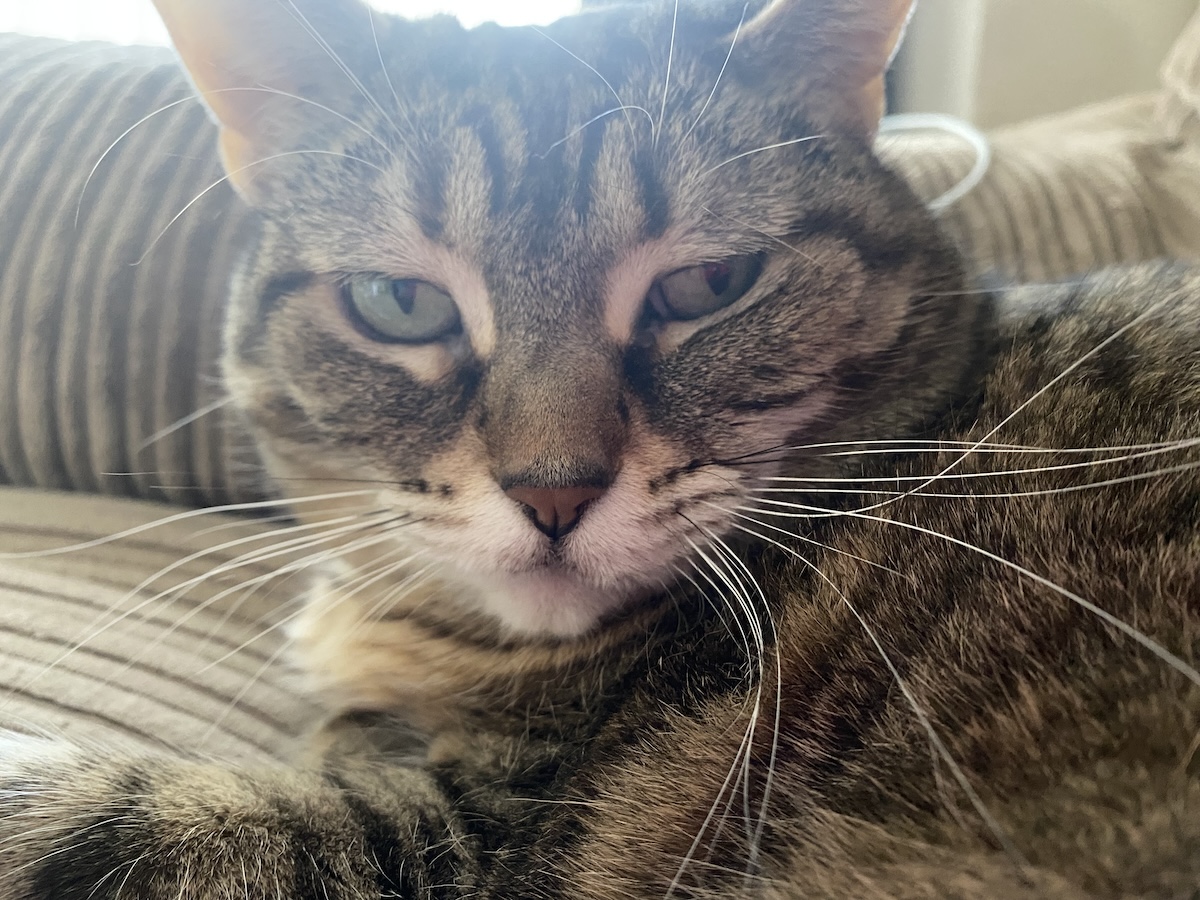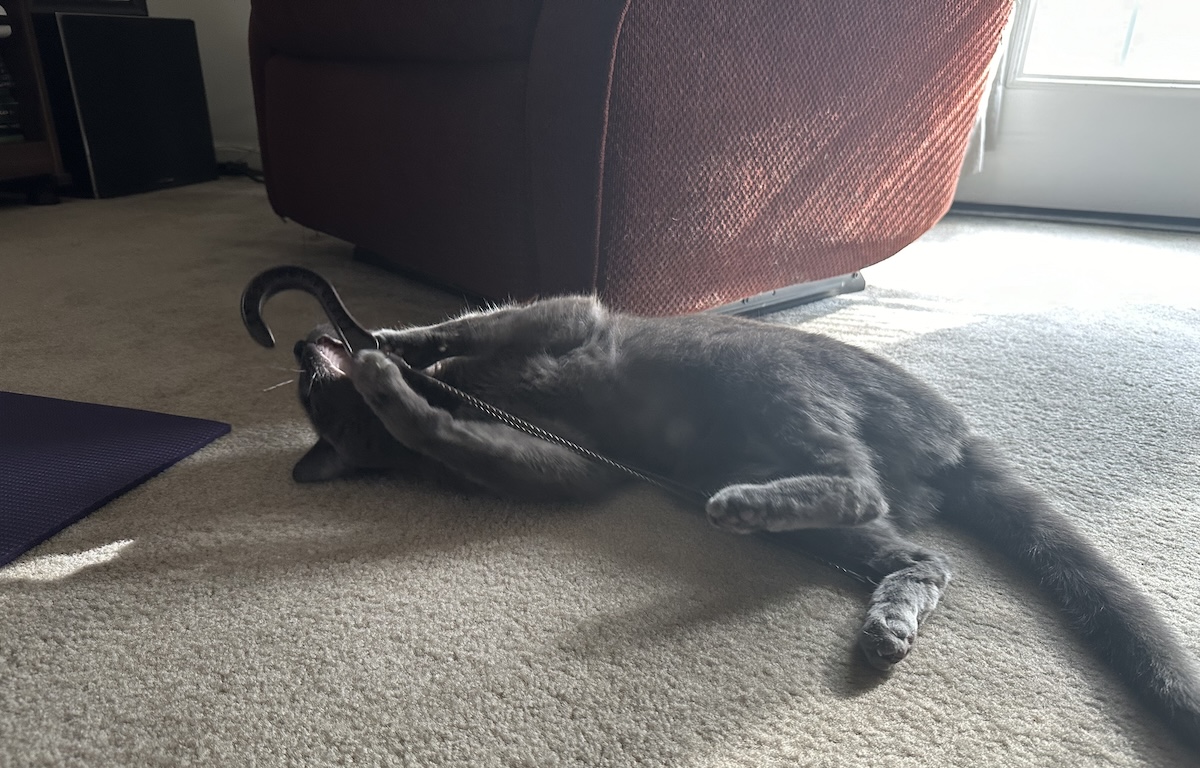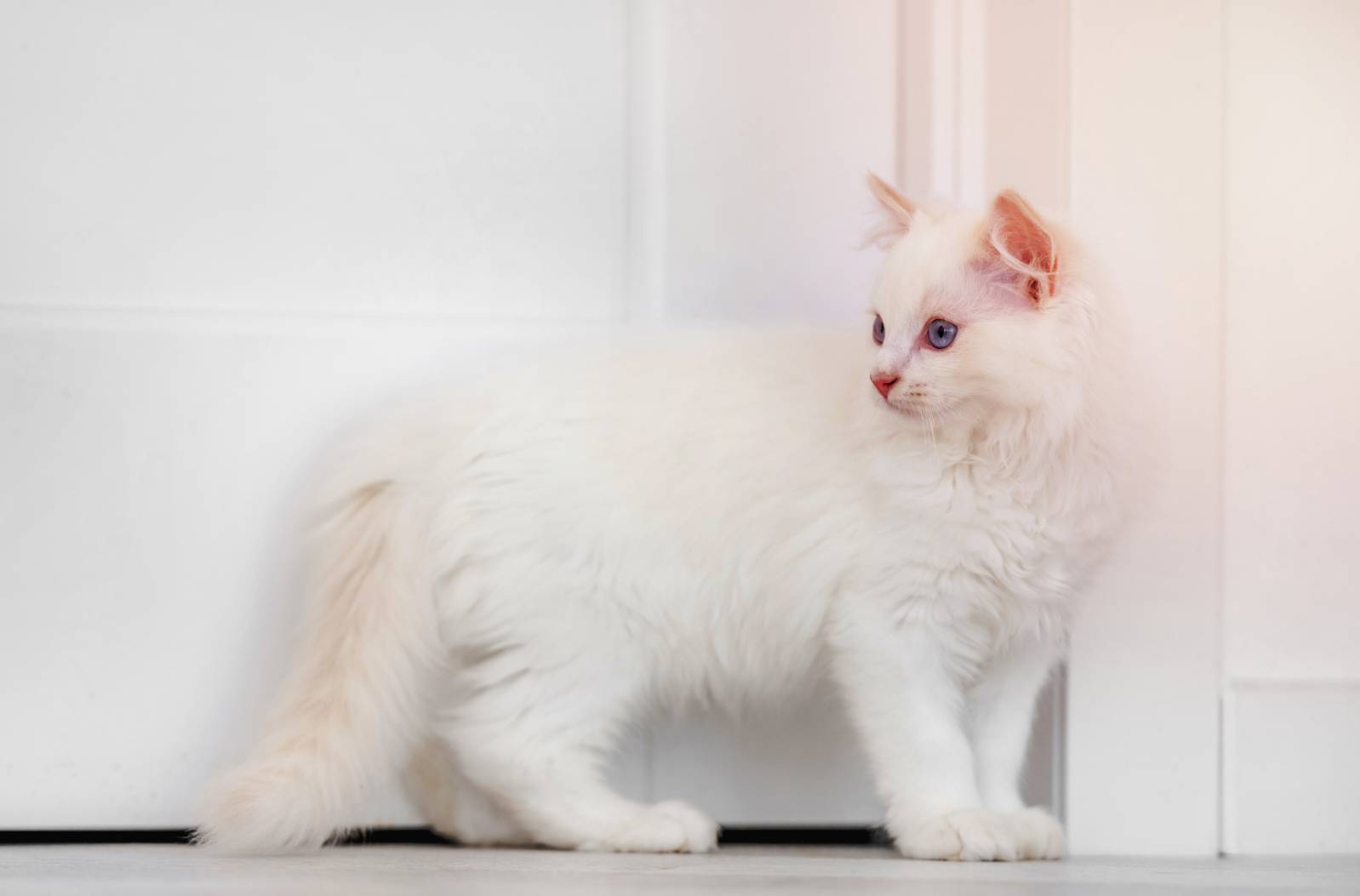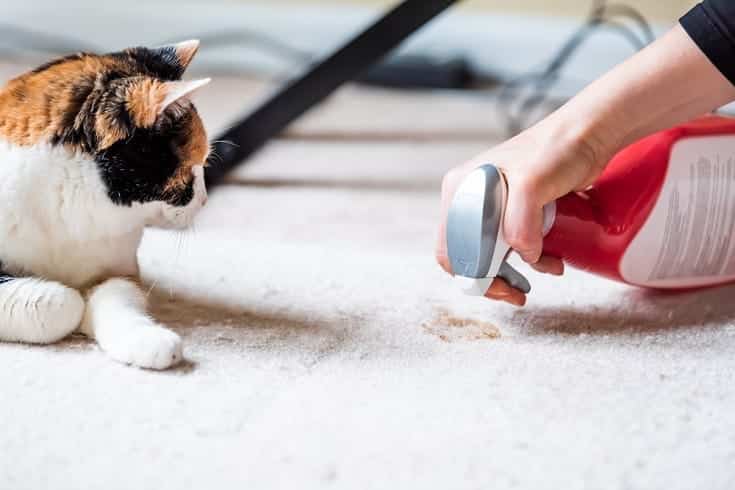
In this guide, we’ll list our top reviews of the best cat urine, odor, and stain removers in the market in the UK today so that you have an idea of what to look for in a quality cat cleaner.

A Quick Glance at Our Winners in 2024
| Image | Product | Details | ||
|---|---|---|---|---|
| Best Overall |
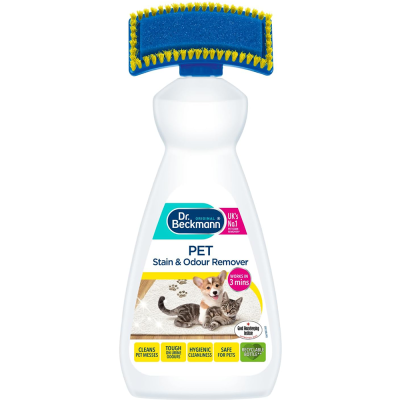
|
Dr. Beckmann Pet Stain & Odour Remover |
|
CHECK PRICE |
| Best Value |
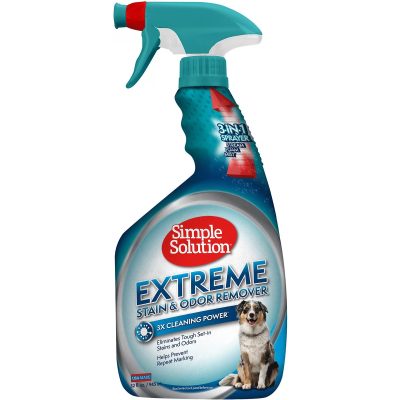
|
Simple Solution Stain and Odour Remover |
|
CHECK PRICE |
| Premium Choice |
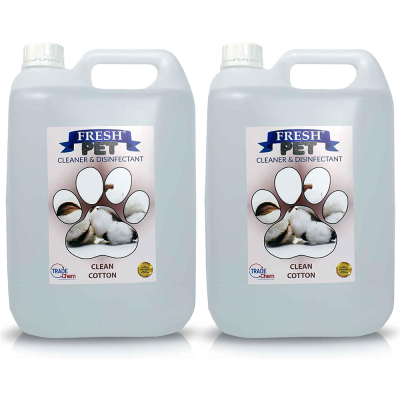
|
FRESH PET URINE SMELL ODOUR REMOVER |
|
CHECK PRICE |
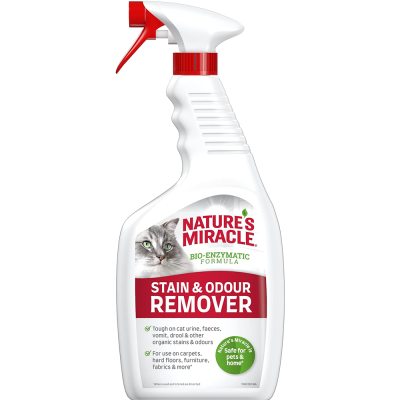
|
Nature's Miracle Cat Stain & Odour Remover |
|
CHECK PRICE | |
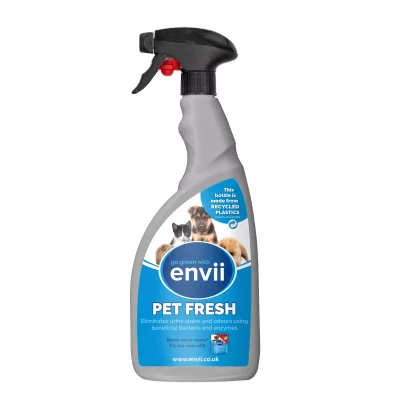
|
Envii Pet Fresh |
|
CHECK PRICE |
The 9 Best Cat Urine, Odor, & Stain Removers in the UK
1. Dr. Beckmann Pet Stain & Odour Remover – Best Overall
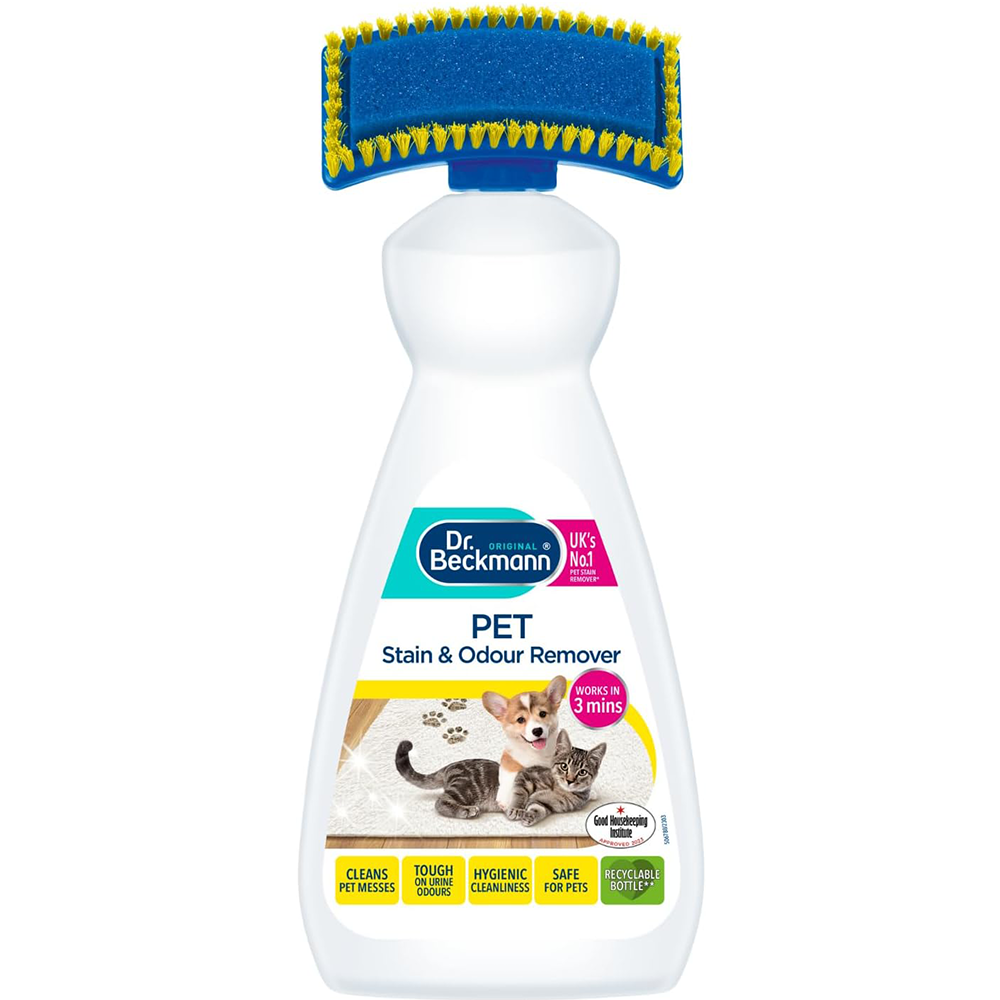
| Product size: | 650 milliliters |
| Suitable for: | Carpet, upholstery |
| Product form: | Aerosol |
Dr. Beckmann Pet Stain & Odour Remover removes stains along with odor, and it doesn’t matter if the stain is old or new. This product comes with an applicator brush that allows you to get the cleaning agents deep into carpet fibers, eliminating the stain and odor. This oxy-powered formula will also discourage your cat from soiling in the same area, and it works on dog urine, too.
This product is gentle on carpets, but it’s a good idea to do a spot test to ensure it won’t affect the color of your carpet or upholstery. This formula also removes feces and vomit in just 3 minutes. It even leaves behind a fresh and clean scent.
Some consumers state that the product stained their carpets or furniture, and some do not care for the scent. The bottle may also leak during shipping. Nonetheless, this product is reasonably priced, and many consumers are happy with the results, making it our pick for the best overall cat urine, odor, and stain remover.
- Comes with an applicator brush
- Oxy-powered formula
- Works for both dog and cat urine
- Removes feces and vomit
- Clean, fresh scent
- Might stain carpet
- Bottle may leak during shipment
2. Simple Solution Extreme Pet Stain and Odour Remover – Best Value
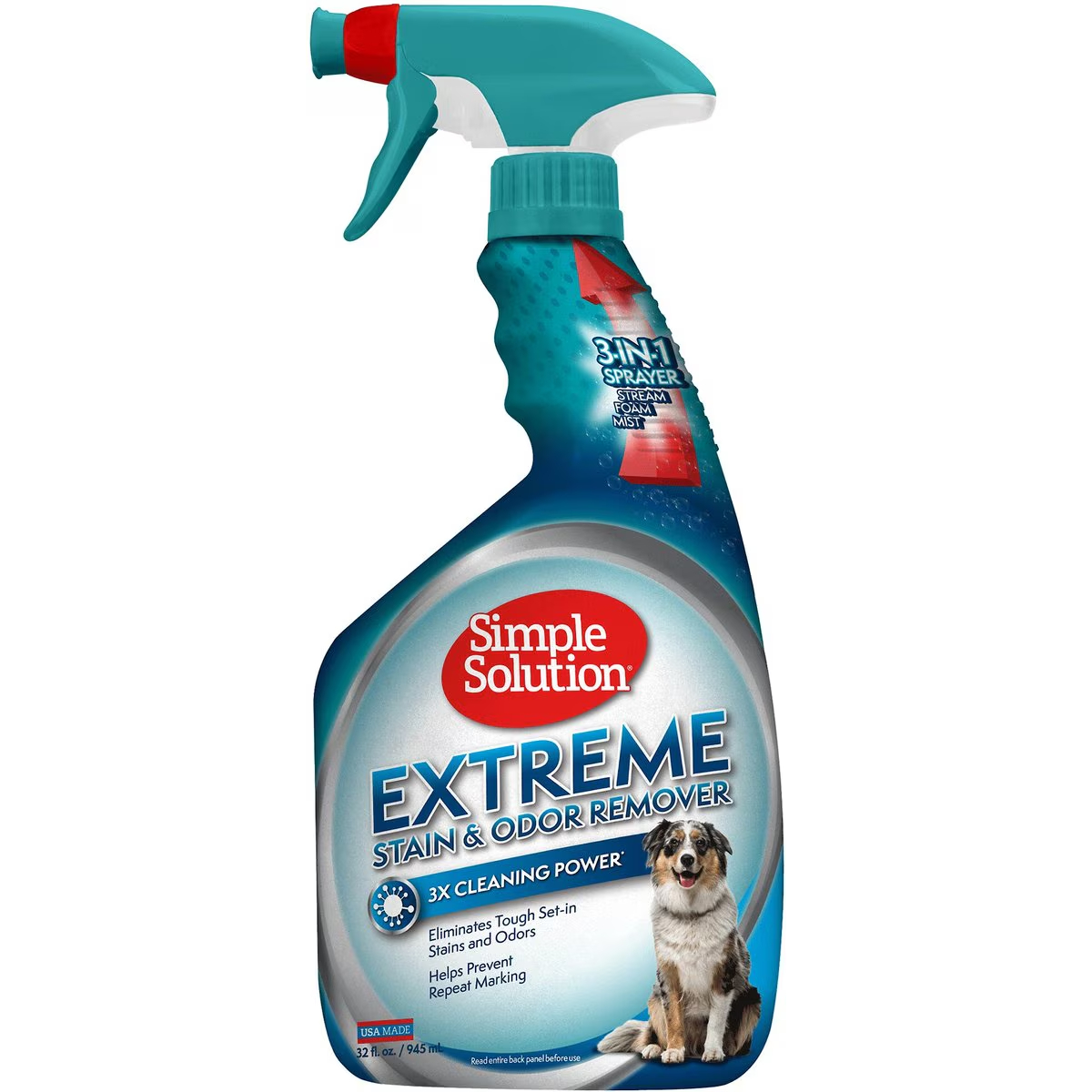
| Product size: | 950 milliliters |
| Suitable for: | Carpets, upholstery, clothes, bedding, fabrics |
| Product form: | Spray |
Simple Solution Extreme Pet Stain and Odour Remover is a professional-strength enzymatic cleaner that breaks down stains and odors. It works for both dog and cat stains and odors, and it is reasonably priced for a good value. It’s safe to use around pets and children, and the sprayer gives you the option of a stream, foam, or mist, depending on your needs. Since the enzymatic formula breaks down the stain along with the odors, it will discourage your pet from soiling in the same spot. It will remove feces, vomit, urine, and drool.
Some consumers report that it didn’t remove the smell, and it may not work on old stains, but many have had great results. Given the size, price, and the fact that it is an enzymatic cleaner, we feel this product is the best product for the money.
- Works on dog and cat stains
- Different spray options
- Cleans feces, vomit, urine, and drool
- Safe to use around children and pets
- May not lift old stains
- May not remove smell effectively
3. FRESH PET URINE SMELL ODOUR REMOVER – Premium Choice
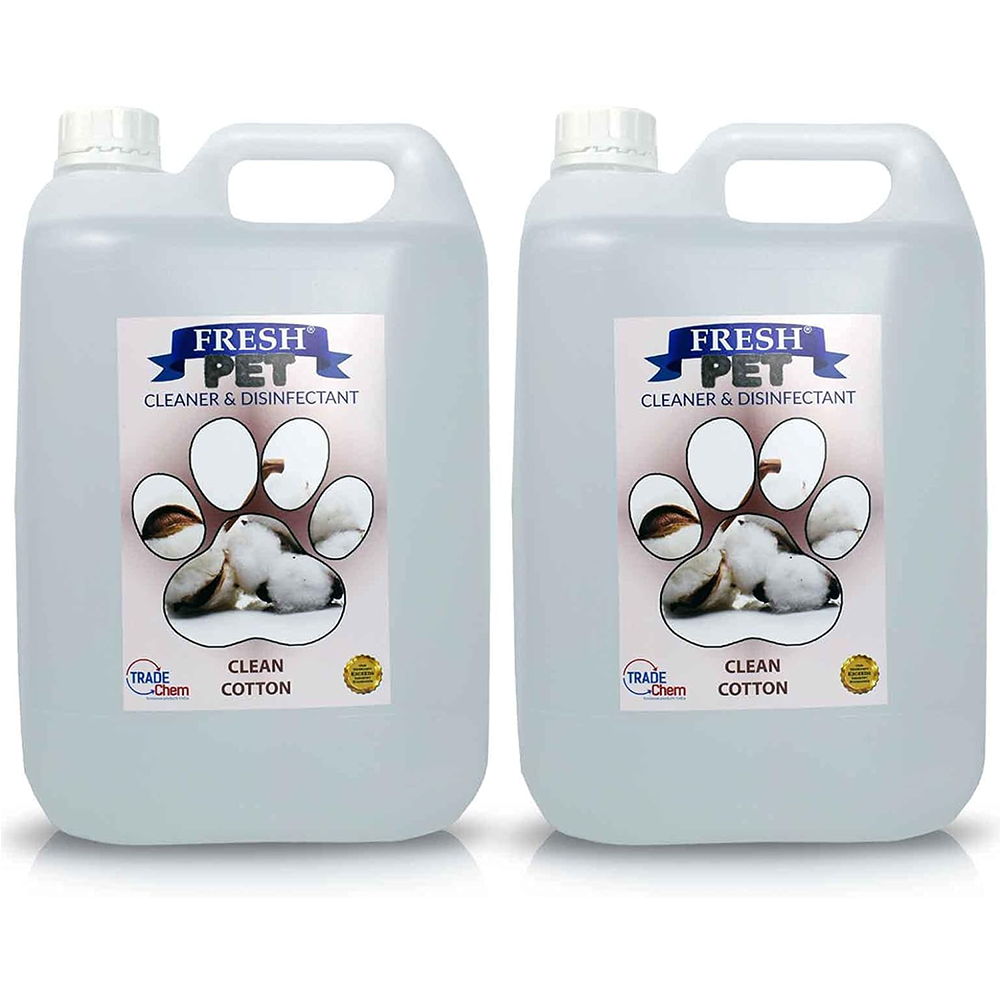
| Product size: | 5 liters |
| Suitable for: | Carpet, floors, walls, fabrics, bedding |
| Product form: | Liquid |
Fresh Pet Urine Smell Odour Remover comes in two large containers of 5 liters each, and the formula is a powerful cleaner, disinfectant, and deodorizer all in one. Depending on your needs and where the stain is located, you can apply it by mopping, spraying, or wiping.
You’ll want to dilute the formula with a 1:1 ratio of liquid and water for best results. This product has a multitude of fragrances, and you’ll be sure to find one that you like. It’s safe to use around pets, and it kills 99.99% of bacteria and viruses.
This product may leave a residue behind on certain surfaces, such as porcelain floors, and odors may resurface after some time, requiring another application. This product is also expensive.
- Cleans, disinfects, and deodorizes
- Many fragrance choices
- Kills 99.99% of bacteria and viruses
- Safe to use around pets
- May leave a residue
- May not eliminate smell
- Expensive
4. Nature’s Miracle Cat Stain & Odour Remover
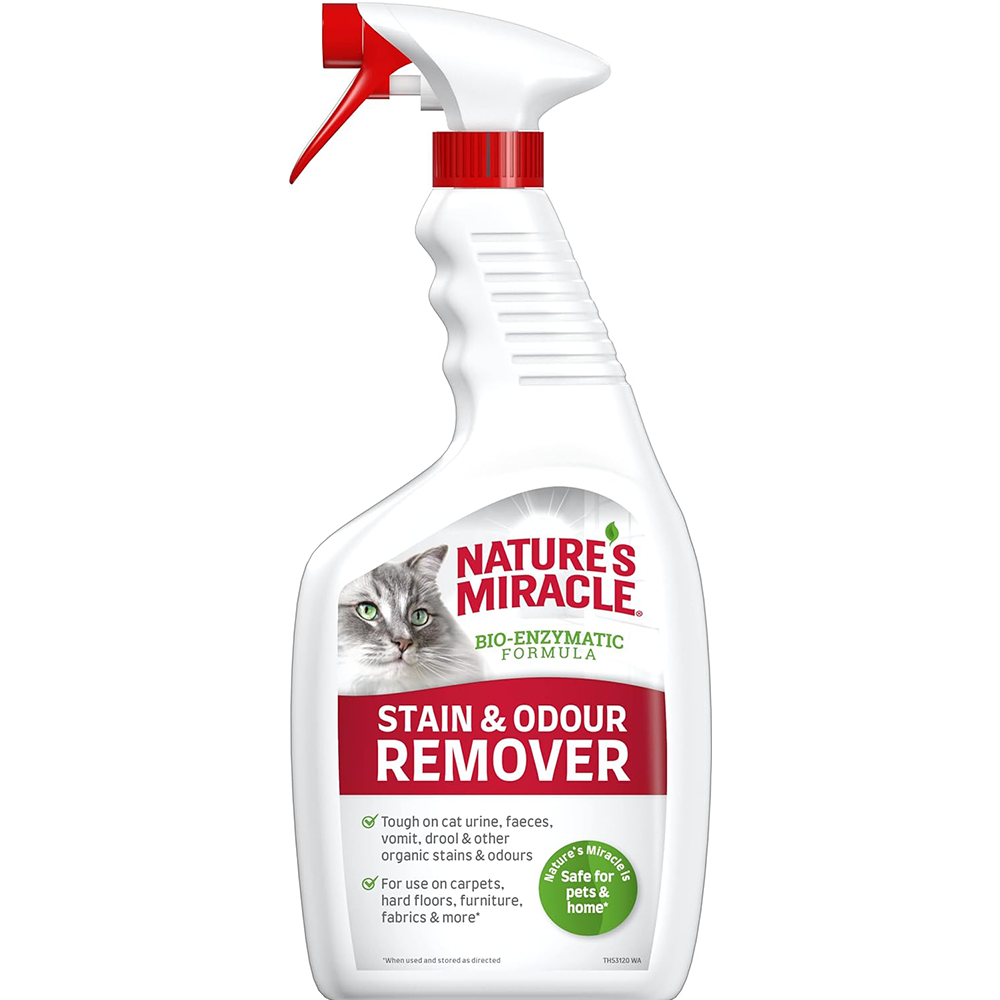
| Product size: | 709 milliliters |
| Suitable for: | Carpet, hard floors, furniture, and fabrics |
| Product form: | Spray |
When it comes to removing cat urine stains and odors, Nature’s Miracle Cat Stain & Odour Remover is hard to beat. This bio-enzymatic formula breaks down tough stains on contact, leaving behind a fresh, citrus scent. You can use it on carpet, hard floors, furniture, and fabrics, and it works on urine, feces, vomit, and drool. There’s no need to dilute the formula, and it works fast.
Keep in mind that for tough and old stains, you may have to apply it more than once to eradicate the stain and odor completely. Be careful not to get the product in your eye, as it will cause eye irritation.
- Bio-enzymatic formula
- Works fast
- Fresh citrus scent
- No need to dilute it
- Often requires multiple applications
- Can cause eye irritation
5. Envii Pet Fresh
| Product size: | 750 milliliters |
| Suitable for: | Carpet, hard floors |
| Product form: | Spray |
Envii Pet Fresh is an enzymatic stain and odor eliminator suitable for carpets and hard floors. The formula has a fresh mint fragrance, and the enzymes break down the bacteria that cause odors from cat urine. This product is chemical-free and only uses natural ingredients to tackle tough stains and odors effectively. Since it’s 100% natural, it’s safe to use around children and pets, and the bottle is made from 100% recycled materials.
Despite its natural ingredients, the mint fragrance may have a chemical smell to some people, and some report that the formula does not prevent future accidents in the same spot.
- Enzymatic formula
- Uses 100% natural ingredients
- Safe for use around children and pets
- Bottle made from 100% recycled materials
- Some think it has a strong chemical smell
- Might not deter pets from soiling the same spot
6. Pro-Kleen Multi-Purpose Deodoriser, Disinfectant, Sanitiser, Cleaner & Urine Neutraliser
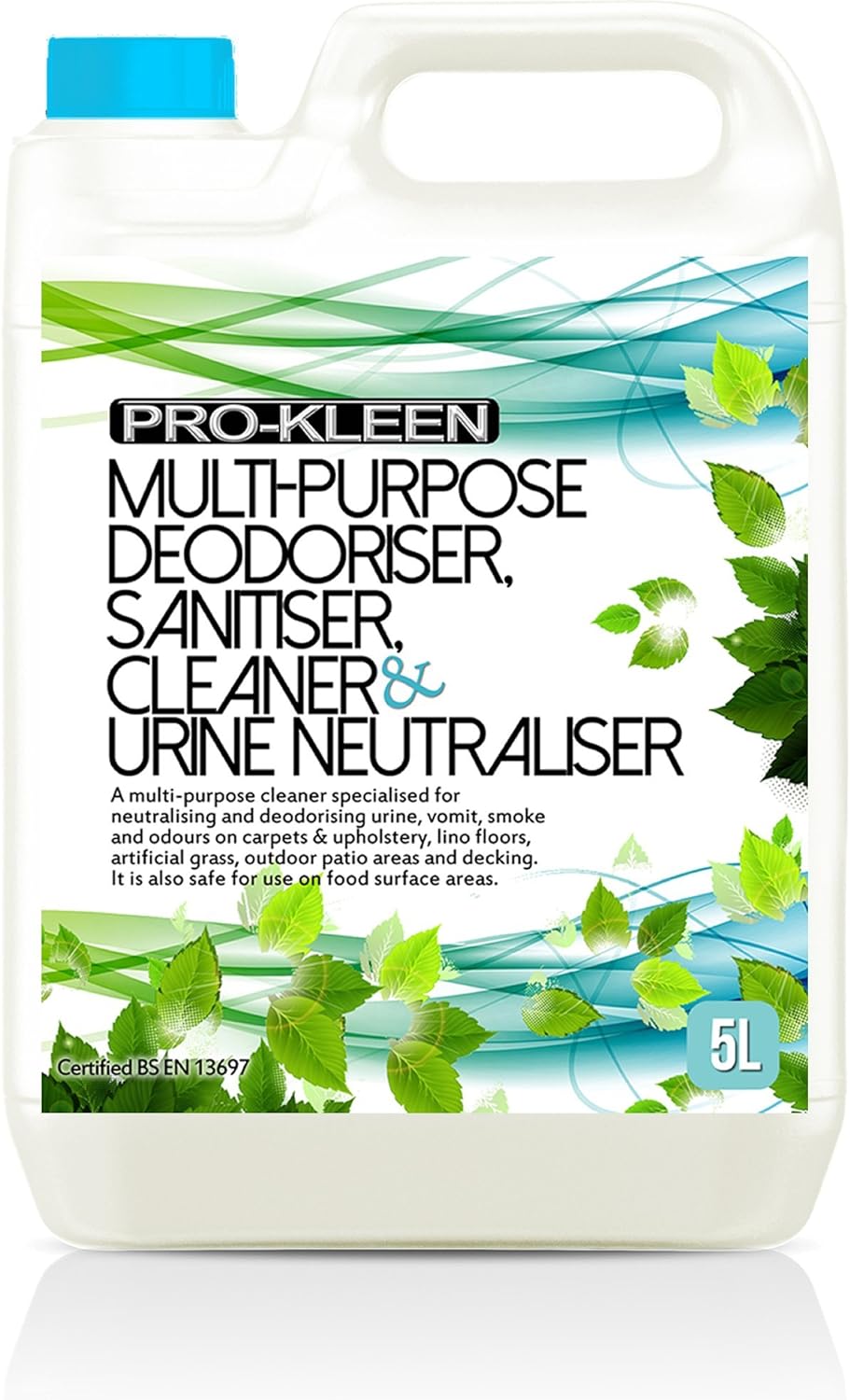
| Product size: | 5 liters |
| Suitable for: | Laminate floors, upholstery, carpet |
| Product form: | Spray |
Pro-Kleen Multi-Purpose Deodoriser, Disinfectant, Sanitiser, Cleaner & Urine Neutraliser is a concentrated, professional formula. The powerful bactericidal action breaks down urine fast and takes germs and odors with it. It’s suitable for laminate flooring, carpet, and upholstery. It’s perfect for indoors, but if you happen to have artificial grass, this product will work on that, too.
Some diluting requirements will depend on where you’re using the product and how much you need, but the manufacturer explains just how much dilution you’ll need for the product to be effective.
Be careful not to get this product on your skin or in your eyes, as it will cause irritation. Some people state that it doesn’t remove odors and is expensive.
- Professional formula
- Indoor and outdoor use
- Works fast
- Needs to be diluted
- Causes skin and eye irritation if exposed
- Expensive
7. NATURALLY GONE Pet Odour Eliminator by Airpure
| Product size: | 750 milliliters |
| Suitable for: | Carpets, fabrics, footwear, pet beds, and furniture |
| Product form: | Spray |
NATURALLY GONE Pet Odour Eliminator by Airpure is an organic enzymatic formula that you can use on virtually just about anything. The natural and healthy enzymes destroy pet urine, odors, and stains, and it has a pleasant herbal scent. It effectively removes stubborn pet stains, such as vomit and feces, as well as milk, coffee, and wine. This product is 100% vegan and cruelty-free, and you can use it in your cat’s litter box for a quick freshening up.
The manufacturer also offers a 100% money-back guarantee if not completely satisfied, and it’s made in Britain. The smell puts off some customers, and some have no luck eliminating cat urine using this product. The urine smell may return, as well.
- 100% vegan and cruelty-free
- Uses natural and healthy enzymes
- Can use it in your cat’s litter box
- Made in Britain
- May not eliminate urine smell
- Smell could return
- Some people dislike the scent
8. Buddy’s Best Dog & Cat Urine Stop Spray
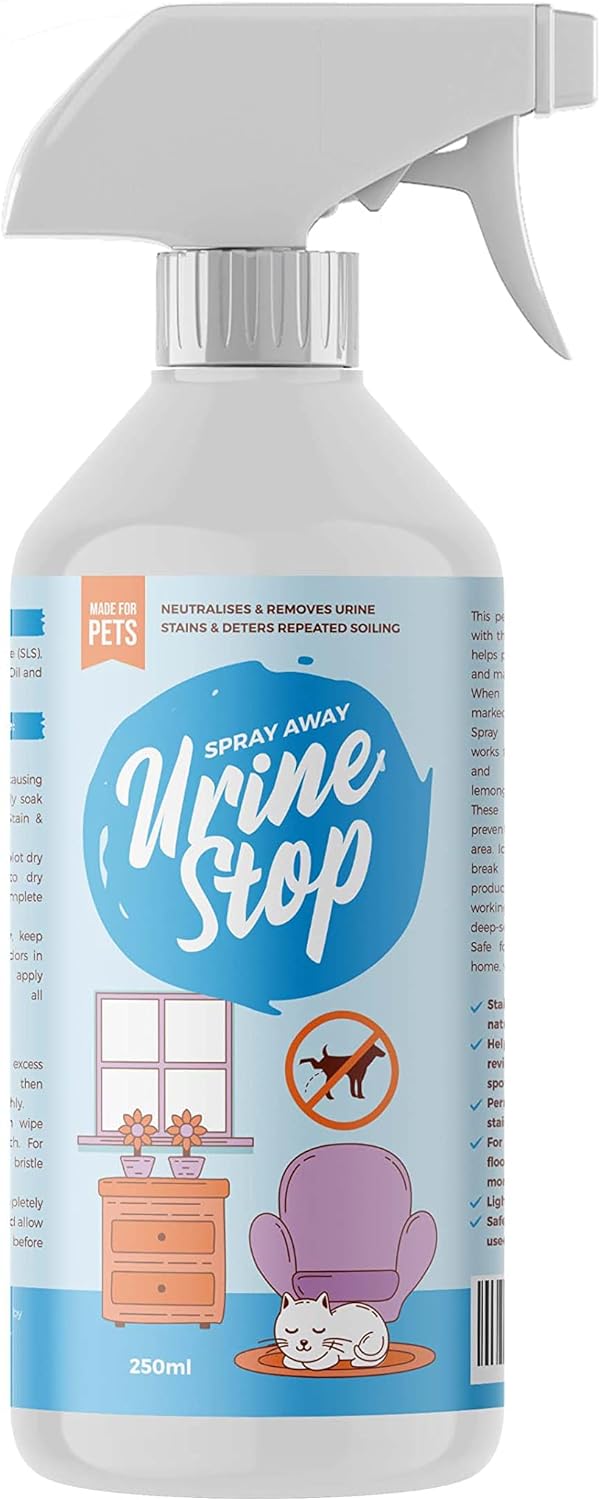
| Product size: | 250 milliliters |
| Suitable for: | Carpet, hard floors, furniture, and clothing |
| Product form: | Spray |
Buddy’s Best Dog & Cat Urine Stop Spray is a dual-action formula that is 100% natural. To use this product, you simply spray the stain, wait 5 minutes, and then blot with a cloth. There’s no need to dilute the solution, and it’s ready to go straight out of the bottle. It has a light and fresh scent, and it’s safe to use around pets and children.
It may take more than one application to completely remove the stain and odor, and it may not deter your cat or dog from going potty in the same spot. It’s also on the pricey side.
- 100% natural ingredients
- No need for dilution
- Easy to use
- Safe around pets and children
- May take several applications to work
- Won’t deter pets from soiling the same spot
- Expensive
9. Bactador Odour & Stain Remover Spray
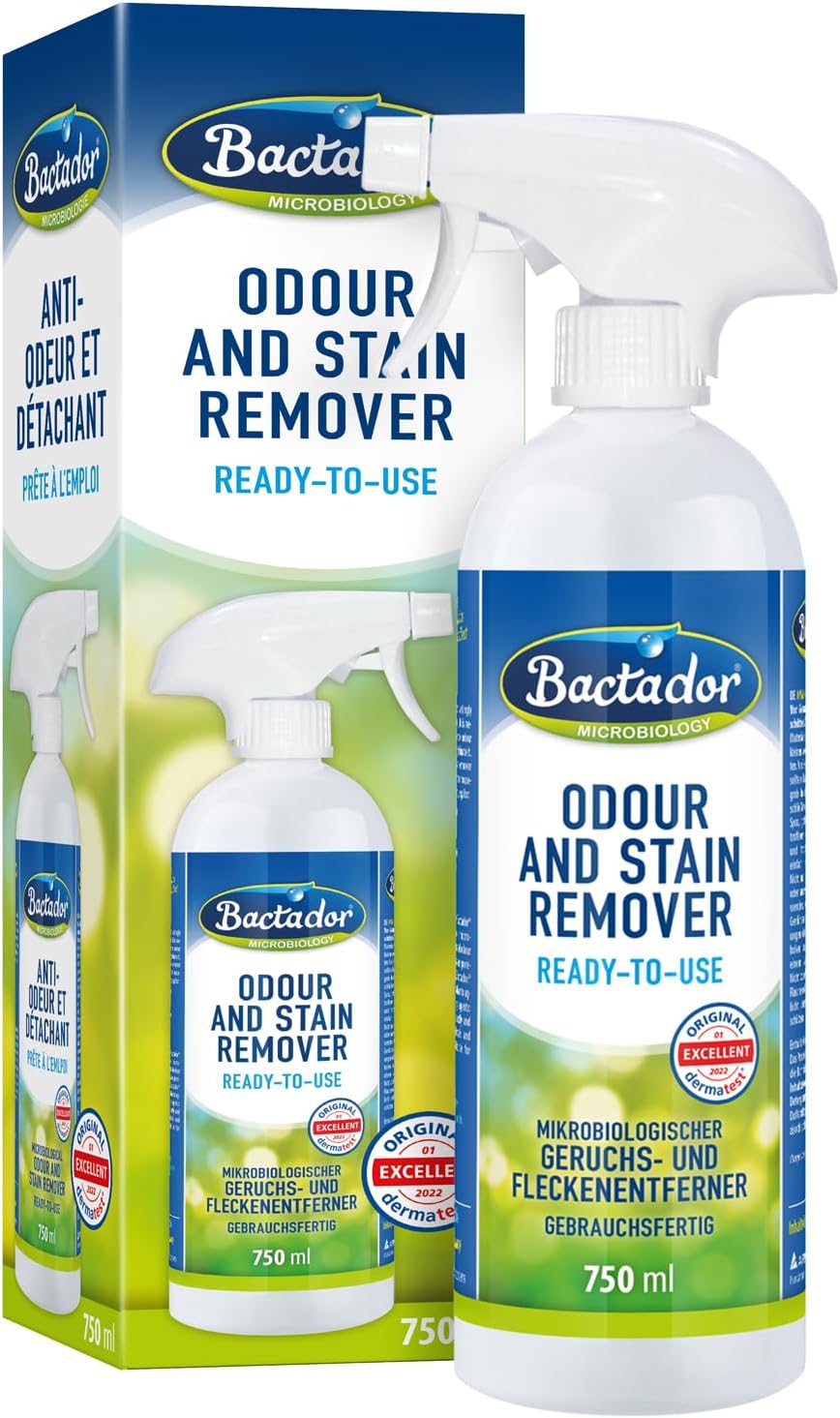
| Product size: | 750 milliliters |
| Suitable for: | Furniture, carpets, and upholstery |
| Product form: | Spray |
Bactador Odour and Stain Remover Spray is a microbiological formula that removes all sorts of stains in addition to urine and feces. It also removes vomit, saliva, sweat, food, and drink stains. It’s recommended by veterinarians and is environmentally friendly, using live microorganisms to eat away at the bacteria and odor in the stain.
The bottle itself does not appear to be stable, as the top can break easily, and the bottle may leak during shipping and handling. You may have to apply several applications to remove the stain and odor, and sometimes, this formula does not eliminate it at all.
- Veterinarian recommended
- Environmentally-friendly
- Microbiological formula that uses live microorganisms
- Top of bottle may break easily
- May leak during shipping
- May require several applications
Buyer’s Guide: Choosing the Best Cat Urine, Odor, & Stain Removers in the UK
After reviewing our top 10 products of the best cat urine, odor, and stain removers, you may be left with more questions. If so, let’s dive even deeper into these products.
Why Enzymatic Cleaners?
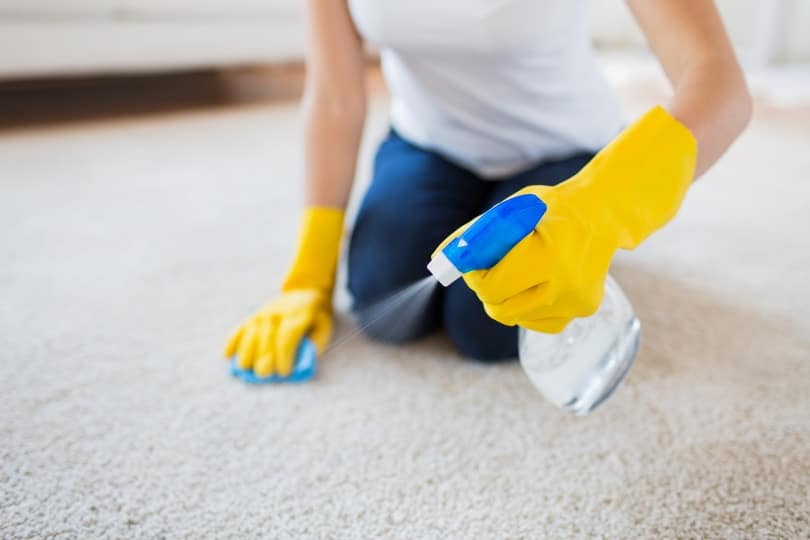
You’ve probably noticed that most of the products on our list are enzymatic cleaners. What does this mean? For starters, enzymatic cleaners break down the soils into carbon dioxide and water. It uses good bacteria to eat away at the bad bacteria in the urine stain, which is what causes the unpleasant and undeniable cat urine smell. In doing so, it takes the smell with it.
With the odor eradicated, it will discourage your cat from soiling in the exact same area.
Fragrance
Some cleaners leave behind a particular fragrance. While this may be pleasant, you may end up not liking the smell it leaves behind, so you’ll want to determine if you want a specific scent or not.
Your Floor Type
Ensuring that you’re using a product that’s safe for your floor and furniture is extremely important so that you don’t damage it. For example, if you have hardwood floors, you’ll want to double-check that the formula you’re considering is made for that floor type or fabric.
Conclusion
For the best overall cat urine, odor, and stain remover, Dr. Beckmann Pet Stain & Odour Remover contains an oxy-powered formula that penetrates deep into the stain and comes with an applicator brush at a reasonable price. Simple Solution Extreme Pet Stain and Odour Remover is a professional-strength cleaner with different spraying options to suit your needs, all at a great value.
We hope our list helps you make a purchasing decision that best suits your needs. Now, say goodbye to that cat urine stain for good!
See Also:
- Best Automatic Cat Feeders in the UK – Reviews & Top Picks
- Best Cat Litters for Odor Control in the UK – Reviews & Top Picks
Featured Image Credit: Kristi Blokhin, Shutterstock
Contents
- A Quick Glance at Our Winners in 2024
- The 9 Best Cat Urine, Odor, & Stain Removers in the UK
- 1. Dr. Beckmann Pet Stain & Odour Remover – Best Overall
- 2. Simple Solution Extreme Pet Stain and Odour Remover – Best Value
- 3. FRESH PET URINE SMELL ODOUR REMOVER – Premium Choice
- 4. Nature’s Miracle Cat Stain & Odour Remover
- 5. Envii Pet Fresh
- 6. Pro-Kleen Multi-Purpose Deodoriser, Disinfectant, Sanitiser, Cleaner & Urine Neutraliser
- 7. NATURALLY GONE Pet Odour Eliminator by Airpure
- 8. Buddy’s Best Dog & Cat Urine Stop Spray
- 9. Bactador Odour & Stain Remover Spray
- Buyer’s Guide: Choosing the Best Cat Urine, Odor, & Stain Removers in the UK
- Conclusion





